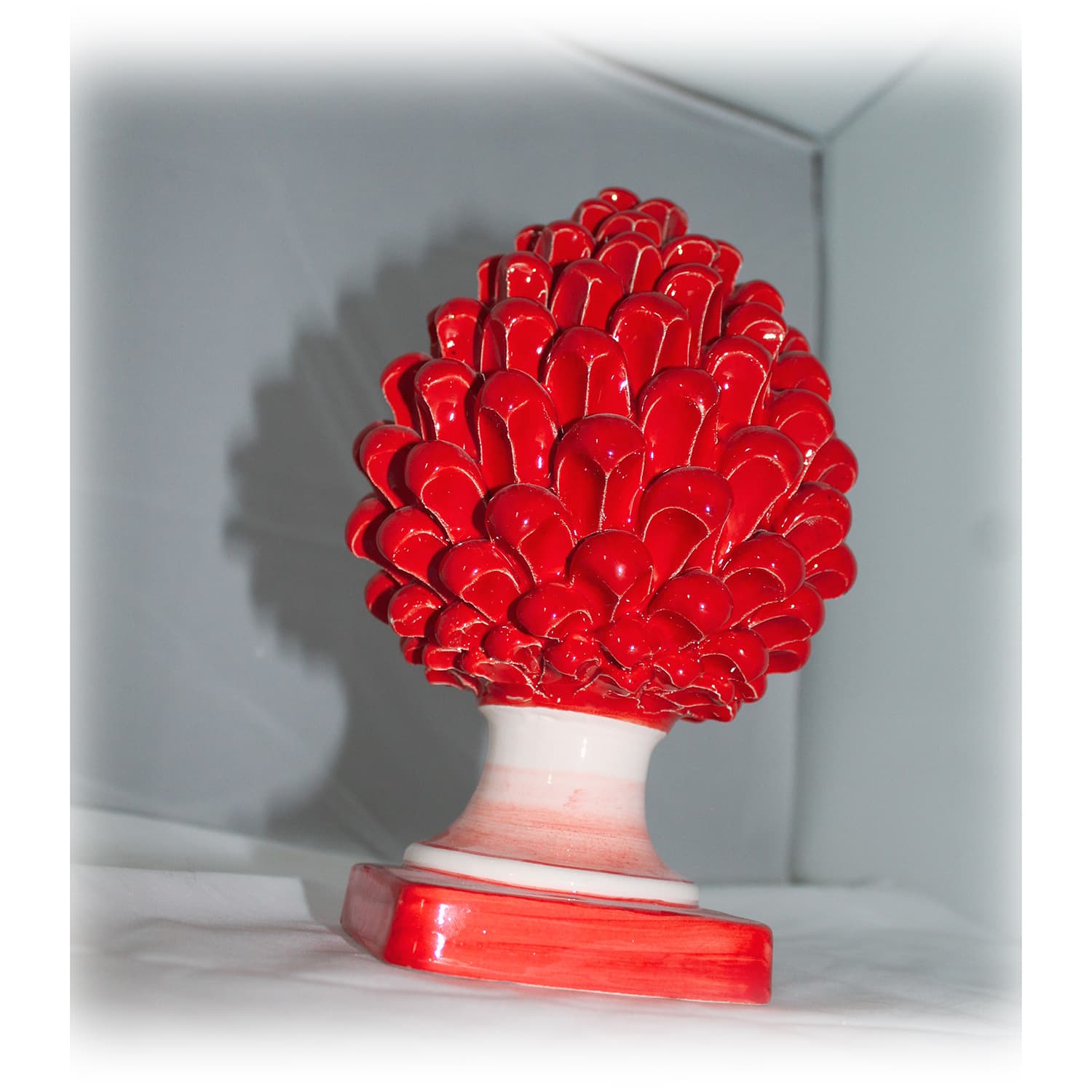
Sicilian ceramics, an art form appreciated all over the world
Sicilian Ceramics is an art form appreciated all over the world thanks to its immense beauty and its great variety of colors, but also thanks to its quality, which derives from the fact that the clay with which the final product is created is carefully selected and refined.
Ceramics are obtained through an artisanal clay manufacturing process which is divided into several phases:
- Selection: the selection of the best clay
- Cleaning: the cleaning of the impurities of it
- Washing: it is washed to purify and refine
The clay, which is then mixed with water to make it very compact, to ensure that cracks do not form. And it is here that the actual processing of what will be the final product begins.
The processing is divided into various stages:
- Modeling (or Shaping)
- Drying
- First baking (biscuit)
- Glazing and Decoration
- Second firing
Modeling is the first phase, and can take place in several ways:
- Freehand modeling: this is the oldest technique, here the clay is modeled by hand and through the use of sticks or eyelets the object is finished
- Colombino modelling: this technique involves assembling "colombini", i.e. small drawn strings that are attached one on top of the other
- Slab modelling: this technique involves the preparation of a clay slab which is then rolled out with a rolling pin to give it the desired shape
- Lathe Modeling (or Turning): this is certainly the oldest technique, but also the best known, it is the one that involves the modeling of cylindrical objects. Through the lathe, supported by a revolving support, the potter, or the master craftsman, gives the clay the desired shape
- Mold modelling: prepared with a plaster mold identical to the object to be reproduced, into which the liquid clay is poured. Once the clay dries, the mold is extracted which is then finished by hand. After which the modeled piece is placed in the oven for cooking.
Then, after Modeling, Drying takes place.
In this process, the artifacts are air dried. During this part great care is needed, because if the object dries in the most homogeneous and uniform way possible there is much less risk that it will deform and above all if this process goes well, it ensures a longer duration over time.
After that, once dried, the object can be engraved and decorated.
At the end of this step, the first cooking called "biscuit cooking" takes place
Here, the product is placed in ovens that reach temperatures ranging between 700°C and 2000°C.
This process can also last many hours, as the temperature will have to rise and fall gradually with pre-established temperatures, in order to make the product undergo a further reduction in volume.
Finally, once the cooking is finished, we proceed with the Glazing and Decoration
Depending on the result you want to obtain, there are different ways of glazing and decorating the product.
First of all it is colored, with colors that can be of three different types:
- Ingobbio: a specific type of glaze to be applied on the dried object, even before being fired. Through this method the product is fired after it is colored, because this type of color can also undergo very high temperatures.
- Cristalline, or Showcases: these are glassy, shiny and waterproof coatings, which allow a glimpse of the underlying clay. Fluxes are then added to the crystallines, such as germanium or alkali to lower the melting point with the clay
- Enamels: these are also of the vitreous type, but unlike the previous ones, these cover the clay. This is the most commonly used type of coloring.
The glazing of a ceramic object, such as the Sicilian pine cones or dark brown heads, has the purpose of protecting the piece from wear, facilitating its cleaning and maintenance and decorating it.
The classic glazing is therefore applied to the biscuit, i.e. to the object already fired for the first time.
At the end of this process, the ceramics such as the Pigne or the Moorish heads are ready to be decorated by hand with brushes and ceramic colours. Here tradition and innovation are combined with the craftsmen who create both handmade and traditional decorations typical of the area and modern ones that follow current design trends.
Finally, after glazing and decoration, a second firing is carried out which allows the enamel to be fixed to the object. This firing takes place in the oven at a temperature between 800°C and 1000°C, depending on the fluxes used in the glaze.
 English
English Italiano
Italiano
All comments